Anyone who has been involved with crowdfunding sites like Kickstarter and IndieGoGo, and particularly those who have backed hardware products, know all about product delays. I’ve written before about how crowdfunding sites are invigorating the hardware startup market, allowing hardware products to reach the market that would never have done so in the past. The flip side is of course that not all the hardware products that receive crowdfunding do in fact reach the market.
Many crowdfunded products have famously failed, such as the Eyez by ZionEyez HD video recording glasses whose principles seemed to simply disappear off the face of the planet without delivering any products (and it’s unclear if they ever worked on their product at all). That case was covered by Forbes and Network World, although it only raises about $350,000. More recently Kickstarter has made it harder for pie-in-the-sky hardware ideas to make it onto the site. One interesting case was the Skarp Laser Razor, which raised over $4 Million on Kickstarter before the site suspended their campaign. The company quickly switched to IndieGoGo and raised over $450,000. Whether Kickstarter was right and the project ultimately fails remains to be seen.
A product doesn’t need to be crowdfunded to be a colossal failure. The Gizmondo handheld gaming console built up a lot of hype before flaming out fast once they launched. I suppose it’s good they at least launched, although it was apparently the worst-selling console of all time, selling less than 25,000 units. The company behind it had apparently burned through $300 Million, most of it in the six months before it declared bankruptcy. In case you were wondering how a company could spend that much money in such a short period of time, you might remember the story of one executive of Gizmondo who the year following the bankruptcy crashed his $2 Million Ferrari Enzo into a poll on the Pacific Coast Highway at such a such speed that he literally split the car in two. It was later found that he had illegally imported over $10 Million worth of sports cars that were being leased in the UK to the US, and then stopped paying the leases.
Now I wanted to look at three keyboards I’ve previously discussed, and see where they fit into this story. I’m not saying these products will fail, and I certainly hope they do not, but some are examples of hardware crowdfunding projects that have been excessively delayed. Two keyboards, the King’s Assembly and the KeyMouse, were crowdfunded. One, the Kinesis Advantage, is an existing keyboard from a longtime keyboard manufacturer, that has been awaiting an update for many years (for example being announced as forthcoming in 2013).
Let’s start with the two crowdfunded keyboards, since they are incredibly similar. Both the King’s Assembly and the KeyMouse are split ergonomic keyboards whose halves can be moved as mice, allowing one to both type and use the mouse without having to ever move your hands off the keyboard. Both raised similar amounts of money (the KA raised just under $240K and the KM raised just over $150K. The KA cost $200 during the campaign (and is currently accepting pre-orders for $320), while the KM cost $299 during the campaign (and is slated to sell for $399 retail). Both keyboards launched their campaigns with non-mechanical key switches, and later updated their designs to support Cherry MX mechanical switches (I suppose if you’re buying a keyboard for $200-300 you expect quality switches). Both companies are beyond their promised ship dates.
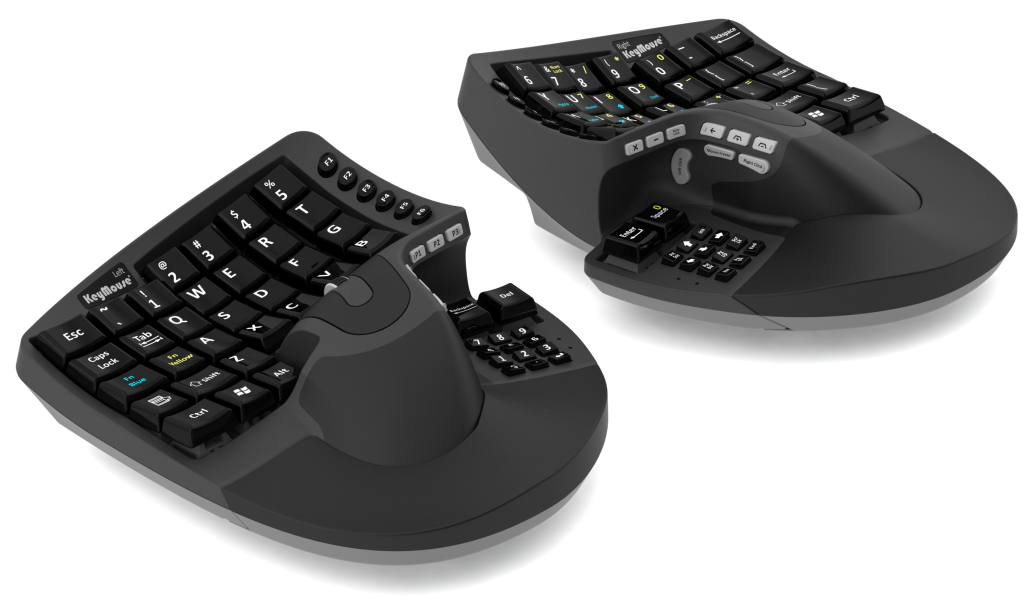
For a long time I suspected the KeyMouse, even though it raised its money later than the King’s Assembly, would ship first. I thought that because the company was out there showing working demonstration hardware of their designs. The KeyMouse was shown at CES 2015 in Las Vegas, and won an Innovation Award at CES 2016, just a few months ago (it was actually announced in November 2015). I didn’t back the KeyMouse, and the updates they’ve posted have been made available only to backers, so it’s not entirely clear what is going on with the product. What I can glean from the comments is that they’ve offered all their backers full refunds, as well as a promise to sell them the final product when released at the same price they paid during the campaign. That seems like a very good way to deal with whatever problem they’re having. Most companies don’t ever offer refunds to Kickstarter campaigns, as it’s not required, and they’ve usually already spent the money. So while I don’t know what happened to cause KM to start offering refunds, it seems a good sign that they’re offering refunds, as it means they’re likely not insolvent. Maybe we’ll see products shipping from them, but don’t hold your breath on seeing it this year.
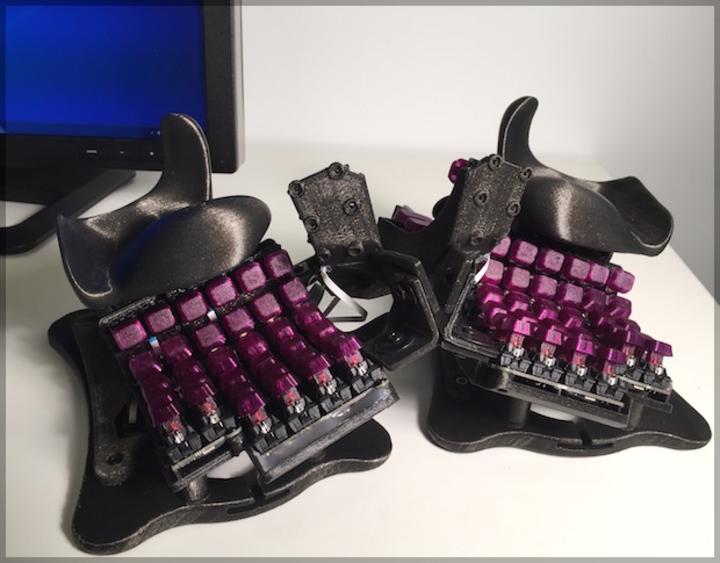
The King’s Assembly has never, to my knowledge, actually shown off its prototypes publicly. Some pictures have been released to backers in updates on Kickstarter, and recently they took orders for what they called Beta keyboards, basically prototypes with 3D-printed plastic parts, that they somehow managed to sell to people for $650 each before the Kickstarter units are ready to ship. I suppose it’s pretty clever getting people to pay for your beta testing hardware. It’s a little galling for some KA backers who paid for two units – a final unit when released, and a pre-production unit earlier. That pre-production unit was supposed to be ready a few months after the campaign ended in April 2014. Those backers, who paid $350 for the privilege of getting an early unit in addition to the final one, don’t get the Beta units. I guess if the money and testing received through the beta program help get the product finished, however, people will be happy to get their products in the end. At this point even the Beta units haven’t shipped yet, although they seem to be in some form of final assembly. Once they get to Beta customers, it will be interesting to see people’s reaction to them. I wonder if Beta customers are restricted from posting photos of the units online. We’ll see what happens when they get into customer hands. Even assuming they get them out soon, and they all work perfectly, I wouldn’t expect a final unit to ship from KA before 2017. If they do get the Beta untis out, it will at least show they’ve managed to manufacture working units in some quantity, although that won’t prove that they can mass-produce the product using the money given them by backers in 2014.
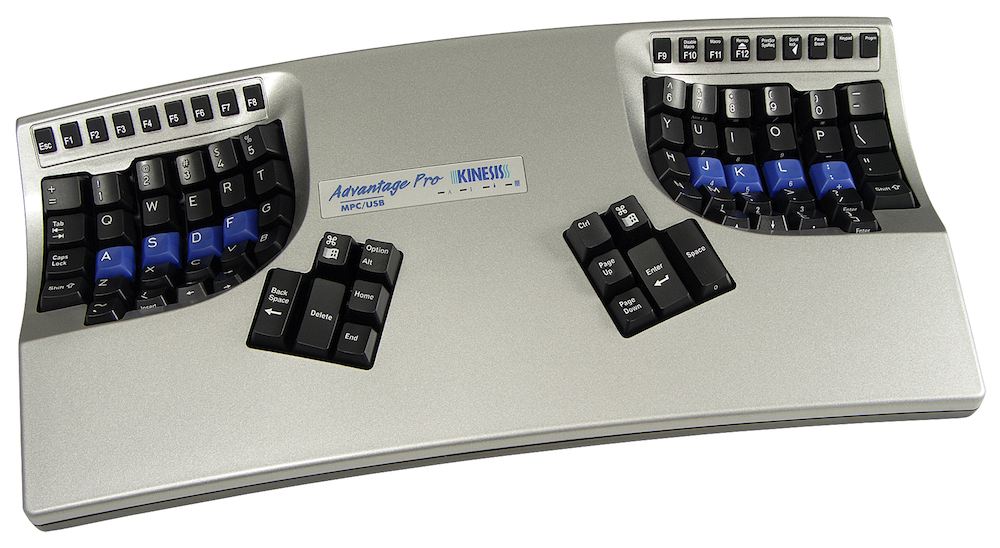
Back in 2012, an employee of Kinesis started a thread on the Geekhack keyboard forum about what features people would like to see in a future version of the Kinesis Advantage contoured keyboard. I’ve written about the Advantage before (Why haven’t there been any keyboard innovations in decades? and How I would re-design the Kinesis Advantage keyboard). It’s a great keyboard, and I’ve used one myself on and off for years. The thread on Geekhack is actually still active, and there have been some interesting updates in the past four years. Of note, in early 2013, that same employee said the keyboard could be expected that year. As recently as last week, he was saying no date for the release, although other indications show that it is likely to come out this year (and in response to a tweet I sent them, they responded Q2). In the discussion online, it was revealed that the company only has about a dozen employees, and while the Advantage is the company’s most expensive keyboard, it isn’t the company’s most profitable. They sell many more of their less-expensive split adjustable Freestyle line of keyboards, which they’ve updated more frequently, adding for example Bluetooth support. In addition, they sell a line of foot pedals and other accessories.
Other priorities combined with some design problems has led to this delay now of more than four years. In the scheme of things, however, what’s four years? By my reckoning the last major update to the Advantage line was in 2002, when they introduced USB to the keyboard. That’s fourteen years since the last update. The overall design, however, hasn’t changed since it’s launch in 1996, which is twenty years ago. Twenty years selling the same design is pretty long by any reckoning, although Kinesis’ design is certainly modeled, at least in part, on the original Maltron keyboard that was designed in 1976 – so one could argue it’s a forty year old design. I’ve written how I would improve it, although my suggestions from 2014 are mostly functional, not design, changes. One design change that many people have asked for is the ability to split the keyboard into two halves, similar to their Freestyle keyboards. It seems that isn’t in the cards for the update planned this year, but they’ve said it’s not impossible in the future. It’s important to note that while this design update has been delayed, it’s not like the other keyboards which have backers that have put up money for them in advance. Kinesis certainly is under no obligation to update their keyboard, and while many people want an updated version, they’re not financially on the line if Kinesis never updates it.
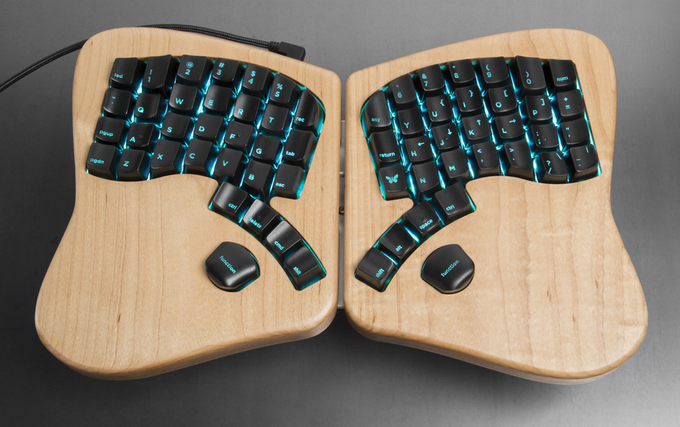
I know the title of this post mentions three keyboards, but I’m going to mention one last keyboard because technically it’s not late yet. In fact I’ve mentioned this keyboard in at least two previous posts – A few interesting keyboards, nearly in existence… and The rise of hardware startups – thank you crowdfunding. The keyboard is the Keyboardio Model 01, and I’ve been following it for quite a long time. If you look at the two previous posts you can see quite a change in its appearance over time. Part of what has been interesting about this keyboard is how much information was shared about its design long before it was crowdfunded on Kickstarter. What started out as an, I guess obsession is not too strong a word, for its designer Jesse Vincent, has been shared all along the way. Jesse started by documenting his keyboard on his blog, as well is in keyboard forums. He went through many many prototypes, and landed in a hardware incubator called Highway1, where he further refined the design. Finally, after years of work, sharing his trials and errors, and even his code, he launched a crowdfunding campaign on Kickstarter.
The campaign was actually quite simple for a crowdfunding campaign. No stretch goals or other oddities. The keyboard was sold for $299. A $999 limited edition actually sold 11 units, amazing to me (to many people it’s probably harder to believe they sold over a thousand keyboards at $299, but while there are many keyboards available for over $299, I don’t know of too many over $999). The Keyboardio folk did a 25 State road trip during the campaign, driving from coast to coast and showing off the keyboard in various maker spaces. In the end, they raised over $650K, more than both the King’s Assembly and the KeyMouse combined. In addition, while I don’t expect the keyboard to ship by its April 2016 date (see, it’s not late yet), I do expect it to ship well in advance of the other two crowdfunded keyboards. There’s no question in my mind that the Keyboardio Model 01 will ship, and not many months after their original ship date.
One can certainly argue that the King’s Assembly and the KeyMouse are much more complicated than the Keyboardio, and that’s mostly true. The Keyboardio has no pointing device (although it can move the mouse position using keys), it doesn’t move, it has many fewer parts, less keys, etc. However, it’s clear from looking at the stories of these keyboards that the Keyboardio was planned out well in advance of being crowdfunded, while the other two were only rough prototypes then (and over a year later for both, they essentially still are).
In the end, we have four new keyboard designs all supposed to be released in the coming year. I hope they all make it to production, and sooner rather than later. This is, to some extent, the beginning of a keyboard renaissance, and in large part it’s due to crowdfunding expanding the hardware market (see The rise of hardware startups – thank you crowdfunding). While not all keyboard crowdfunding campaigns have ended well (such as the failed Multi-Touch glass keyboard), it seems that if keyboards like the above can all reach the market it will encourage others to experiment and come up with new keyboard designs. While hardware crowdfunding has almost always been associated with delays, it’s still a major driver of innovation, and I hope we’ll see more products soon (although if you really want to ship stuff on time, I won’t oppose that).

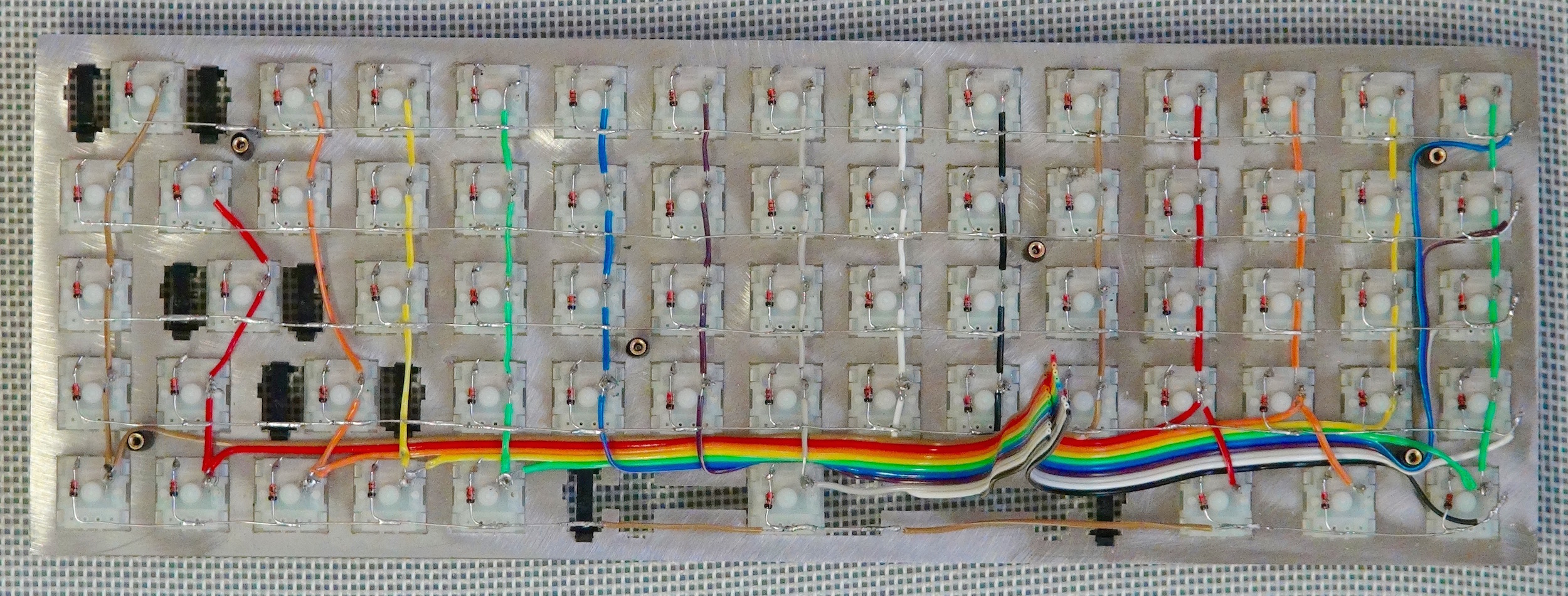
Stumbled on this post. Interesting to see how it has all gone in the intervening years and the Keyboardio M100 out hopefully early next next year and the Kinesis Advantage 360 in the summer.